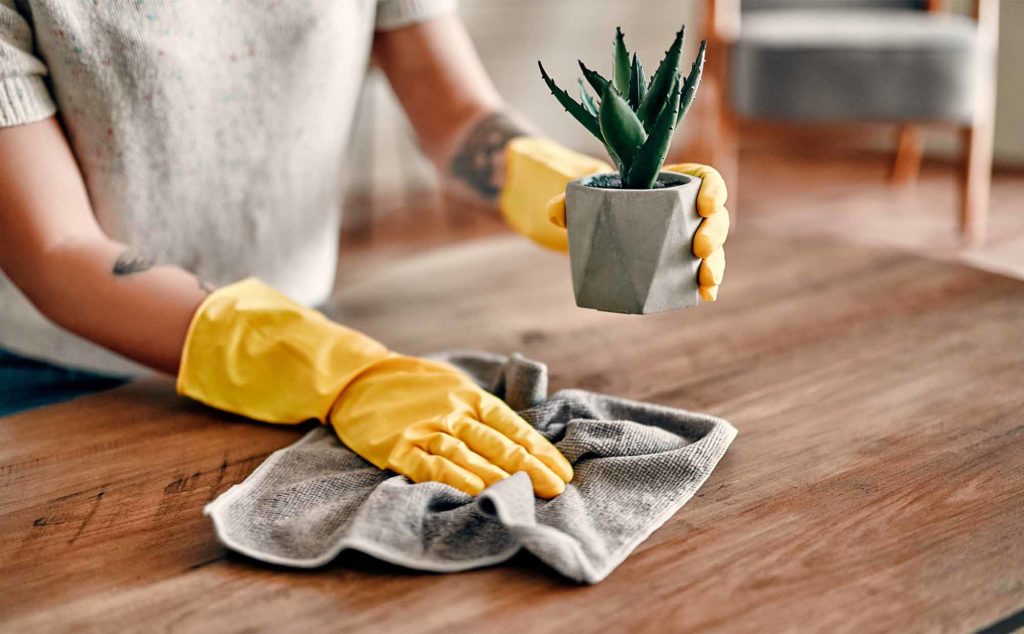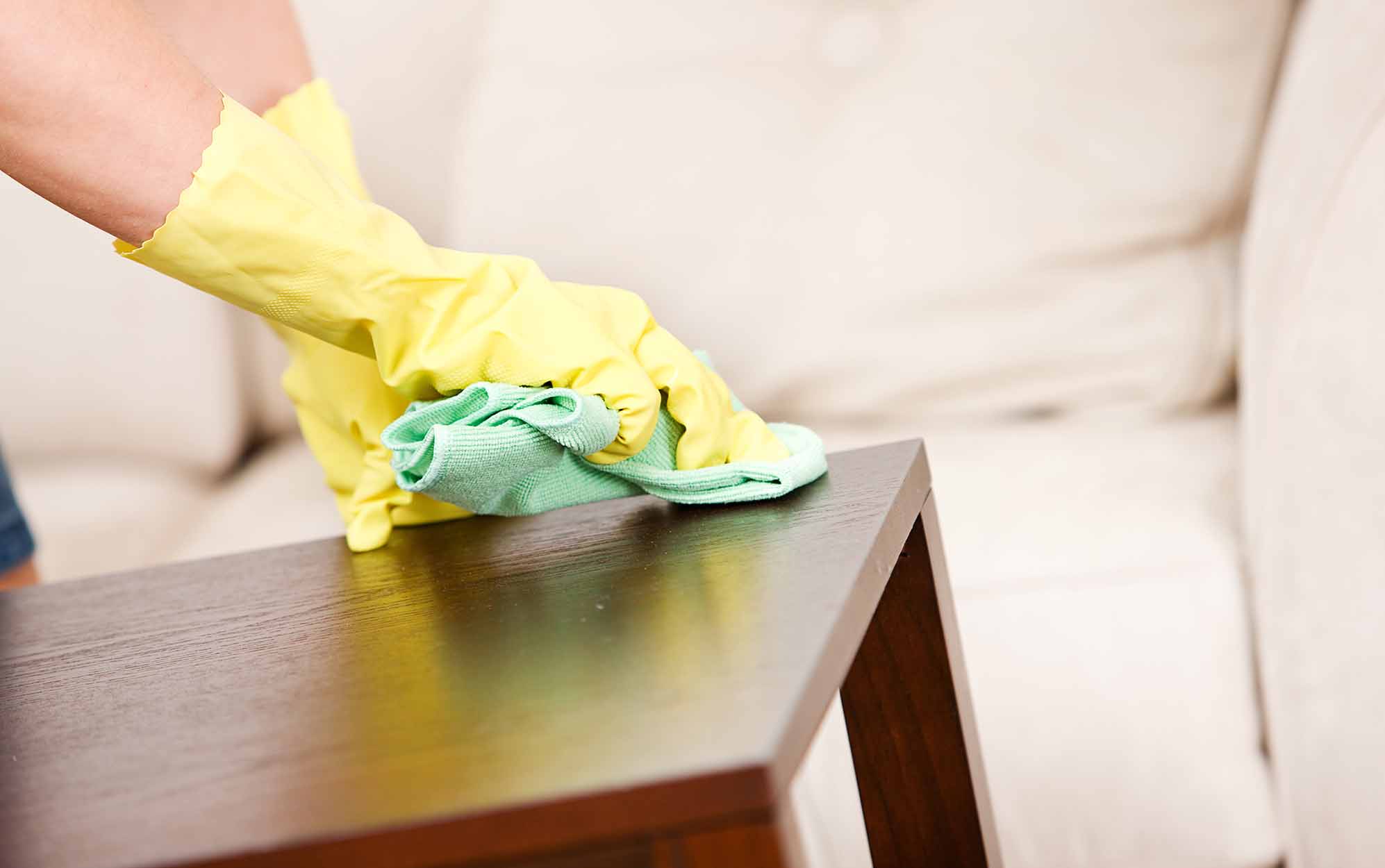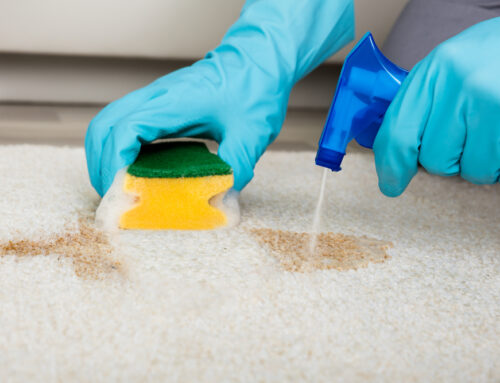Dust collects in a matter of days in any home, but where are the dustiest areas? Find the answer here and learn how to clean high-dust areas.
What Are the Dustiest Areas in a House?
No matter how clean you keep your house, you may have noticed that a new layer of dust can form in as few as two or three days. Don’t take it personally—dust accumulation isn’t a reflection of how clean you are. It happens in every home, and when you don’t have time to clean on a weekly or biweekly basis, dust buildup can quickly make a space look dirtier than it is.
Some of the dustiest areas in a house include:
- Floors and carpets
- Underneath furniture
- Under and on top of the fridge
- On top of books/bookshelves
- The tops of kitchen cabinets
- Windows and door frames
- Baseboards
- Ceiling fans
- Air vents
- Bed frames
- Inside of drawers
- Lampshades
- Electronics
- Plants
- Electronic screens
- Blinds
With so many nooks and crannies for dust to accumulate, here’s what you need to know about where it comes from and what you can do about it.
What Is Household Dust?
It might sound like a basic question—dust is dust, right? But the answer might not be as simple as you think. Dust can be composed of many things, but some of the most common are:
- Dirt and soil particles
- Dead skin cells
- Hair
- Clothing fibers
- Viruses and bacteria
- Dust mites and dead bugs
- Pollen and mold
- Specks of plastic
That’s why getting rid of dust forever isn’t realistic. No matter what you do or how frequently you clean, dust will always appear sooner or later. Fortunately, there are many strategies to help you prevent dust buildup ahead of time.
How To Prevent Dust Buildup
If you’re frustrated with frequent dust buildup at your home, consider the following:
- Stick to a regular cleaning routine.
- Wipe down frequently used surfaces daily.
- Dust and vacuum weekly.
- Wash bedding and towels weekly.
- Replace HVAC filters every three months.
- Keep windows and doors closed as much as possible.
- Place doormats at the entrances to your home.
- Remove shoes when entering the house.
- Consider investing in an air purifier.
- Minimize clutter that can collect dust.
When you don’t have time, regular house cleaning services offer an easy way to reduce dust buildup in your home.

How To Clean Dusty Areas
Once you’ve identified dusty areas in your home, it’s time to develop a plan to clean them. The good news is that dusting is a relatively inexpensive, simple task with the right tools and approach. For the tools, you just need a duster.
Microfiber dusters offer a cost-effective option that can be washed and reused. Paired with dusting spray, you’ll have everything you need to handle the majority of dusting tasks around the house. With a feather duster for tight spaces and a high-reach duster for hard to reach spots, you’ll be able to tackle just about anything.
Note: Avoid using paper towels when dusting because they can scratch surfaces and leave lint behind.
While dusting, also make sure to:
- Start dusting from the top down so that you don’t end up knocking dust onto surfaces you’ve already dusted.
- Turn off fans while dusting to minimize the spread of particles.
- After dusting, vacuum the floors to collect any dust that has fallen on the floor.
How To Dust High Places
When dusty areas are in reach, dusting is a straightforward task, but what should you do when you have to dust in high spots or hard to reach areas like light fixtures and the tops of cabinets? If you want to make sure those out-of-reach areas stay dust-free, invest in a duster with an extendable handle. If you have to get around corners or into tight crevices, a bendable duster should do the job.
You may also need a small indoor step ladder when the extendable handle doesn’t reach far enough. Other than that, dusting in high places is not more complicated than your standard dusting regimen.
Read More Dust FAQs
How Frequently Should You Dust?
You should develop a cleaning plan to make sure each room in the house is dusted once a week. While you might not have time to dust the entire house in a day, you can break the task up over several days so you dust one or two rooms each day. By the end of the week, you’ll have dusted the whole house!
Why Is My Closet So Dusty?
If you’ve noticed that your closet seems to collect dust more quickly than other areas of the house, there’s a good reason for that. A lot of dust is made up of dead skin cells and fabric particles. Your clothes are constantly touching your skin when you’re wearing them. When you hang your clothes up after washing, what remains of those dead skin cells and other particles that have clung to the fabric is stirred up when you open the door.
How Should You Dust Electronics?
Electronics collect dust just like any surface, but you need to take some additional steps to make sure they’re protected when dusting. When wiping down electronics, use a microfiber material because it won’t scratch the screen or glossy components. If using a cleaning spray, choose one that’s safe for electronics to avoid damaging the screen.
How Can You Dust Upholstery?
Cloth surfaces can also collect and spread dust, so you should also account for upholstery surfaces as part of your cleaning plan. The best way to keep upholstery dust free is with an upholstery attachment for your vacuum cleaner.
The Purple Maids Keep Your Home Dust Free
Is dust building up in your home because you don’t have time to dust once a week? The Purple Maids can help with regular cleaning services customized for your home. Contact us today.





